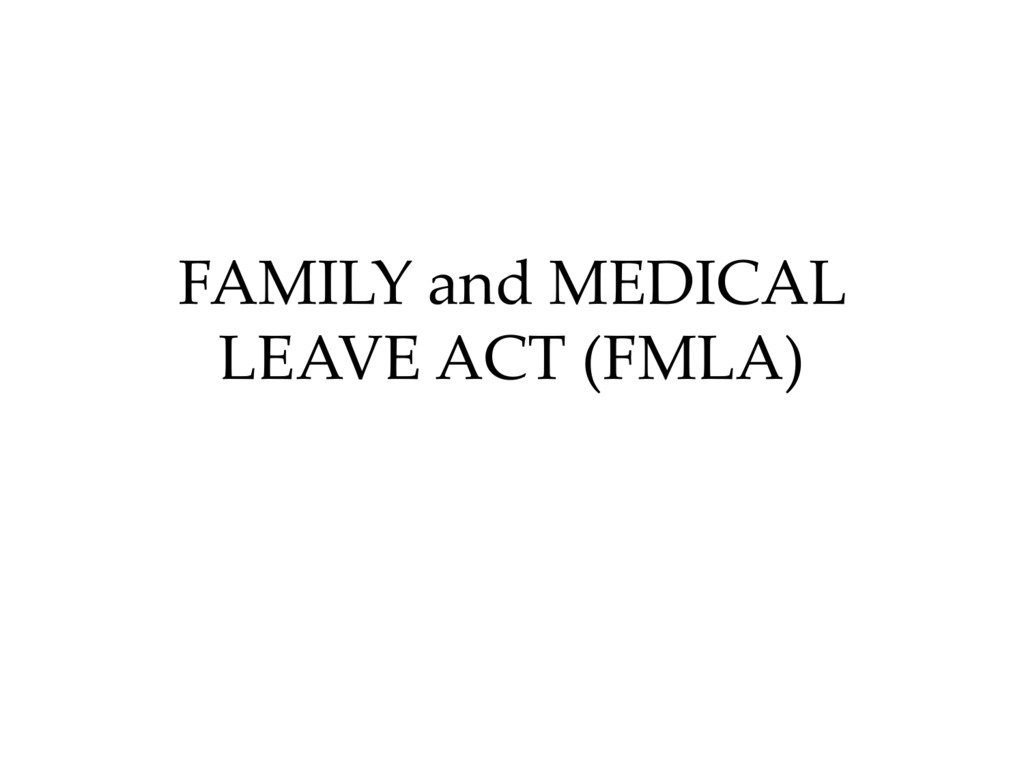Occasional Fmla
While the federal FMLA entitles eligible employees to leave on an intermittent basis for certain reasons, handling that leave has posed its share of issues. True, employees have rights under the FMLA, but that does not mean that employers’ hands are totally tied. Here are some common intermittent leave issues and ways to manage them. Below is a summary and descriptions of reasons that qualify for FMLA leave under current FMLA regulations. Parental Leave after the Birth of a Child. The birth of a child qualifies for FMLA leave, and a mother may use FMLA time off for prenatal care or continuing care once the child is born.

During this election season, the fact that the U.S. is the only developed country without paid family and medical leave has been a talking point for more than one candidate. Yet, the prospect of mandatory paid leave can seem a bit daunting for employers who are still struggling to curb unpaid leave abuse.
It’s undeniable that the Family Medical Leave Act (FMLA) has a legitimate purpose and many employees benefit from its protections. However, there are also employees who abuse the law’s protections. This is particularly true of those who use intermittent FMLA leave when vacation or personal time is not available. Such abuse is disruptive to the work environment and can leave many managers frustrated. Fortunately, the FMLA regulations provide a number of tools that employers can utilize to curb FMLA leave abuse within the workplace.

Certify and recertify
One of the most effective tools for combatting FMLA leave abuse is the medical certification form. All too often, employers fail to obtain medical information necessary to determine whether an employee suffers from a serious medical condition and is entitled to leave in the first place. Employers should require employees to submit a medical certification and may deny the leave request if the certification is not returned. When a certification has entries that are incomplete, ambiguous or non-responsive, the employer may request additional details. If the employee fails to provide the requested information, leave may be delayed or denied. Additionally, FMLA regulations provide a number of opportunities to seek recertification, including intermittent leave.
Ask for a second opinion
Occasional Fmla Meaning
Employers who question the validity of the initial certification may obtain, at the employer’s expense, a second — or even third — opinion from an objective health care provider.
Establish and enforce call-in procedures for all absences
Fmla Intermittent Leave Form Letter
Employers may enforce established call-in and no-show policies, even for employees on FMLA leave. The key is ensuring that such policies are consistently applied and employees on FMLA leave are not being singled out.
Require use of paid leave
Employers may require employees to use paid leave time for their intermittent FMLA absences. Employees are less likely to abuse FMLA if they know they must exhaust their personal or vacation time before using unpaid FMLA leave.
Count all absences related to the condition
Once the medical certification is completed, employers must establish a process for tracking absences related to the condition so they can be counted against the employee’s FMLA entitlement, but not counted against the employee under the employer’s attendance policy.

Require employees to schedule medical appointments around work schedule

FMLA regulations allow employers to require employees to schedule planned medical treatments in a way that least disrupts the employer’s operations. For example, employers can inquire about the frequency of the treatments, available office hours, and whether treatments can be scheduled before or after work or during the employee’s days off.
Consider temporarily transferring employees who take foreseeable intermittent leave

If the need for intermittent leave is foreseeable, an employer may temporarily transfer the employee to an available alternative position that better accommodates recurring periods of leave. The alternative position must have equivalent pay and benefits, but does not have to have equivalent duties.
Establish a policy prohibiting employees from working a second job while on leave
Absent a uniformly applied policy prohibiting secondary employment, an employee is generally protected from disciplinary action for working a second job while on FMLA leave. You can prevent abuse by having a written policy that prohibits supplemental employment while on any type of leave.
Follow up on suspicious circumstances
Credible reports of suspected abuse should be investigated and documented. Termination for FMLA abuse is generally appropriate if the employer honestly and in good faith believes that the employee misused leave, the action is consistent with how the employer would treat non-FMLA leave takers and the decision is not motivated by the fact the employee took FMLA leave. If suspected abuse is brought to your attention, document who and how it was brought to your attention, and follow due process in investigating the concern.
Train front-line supervisors
Intermittent Fmla Forms Printable Forms
Supervisors are the eyes and ears of the organization and should be trained to spot potential FMLA-qualifying absences and bring them to HR’s attention.
Intermittent Family Medical Leave Rules
Although no single tool alone will curtail the abuse of intermittent FMLA leave, if used together these tools will help managers avoid such abuse.
Occasional Fmla
Melissa Dials is Of Counsel at the Cleveland office of Fisher Phillips, a national labor and employment law firm.